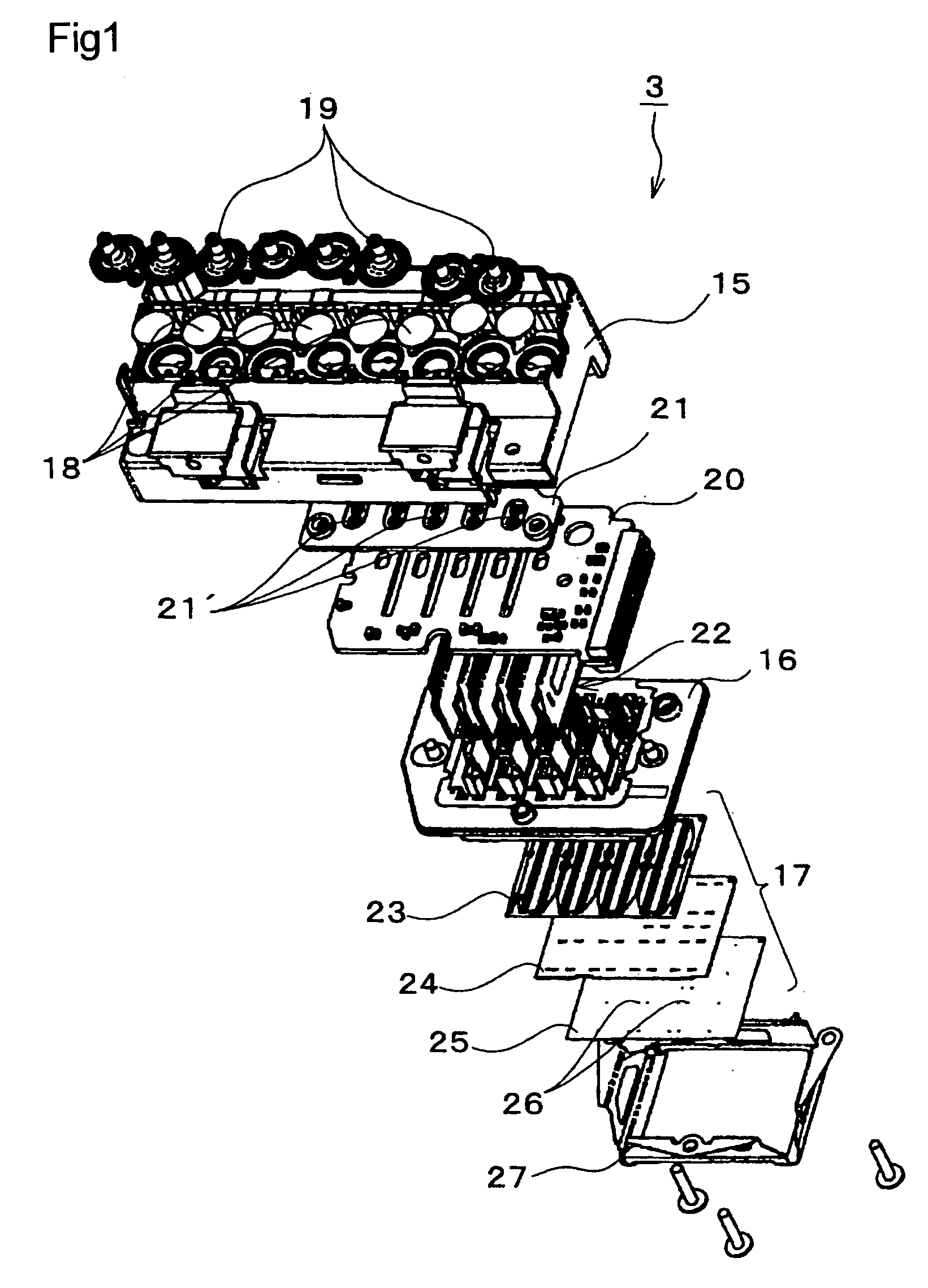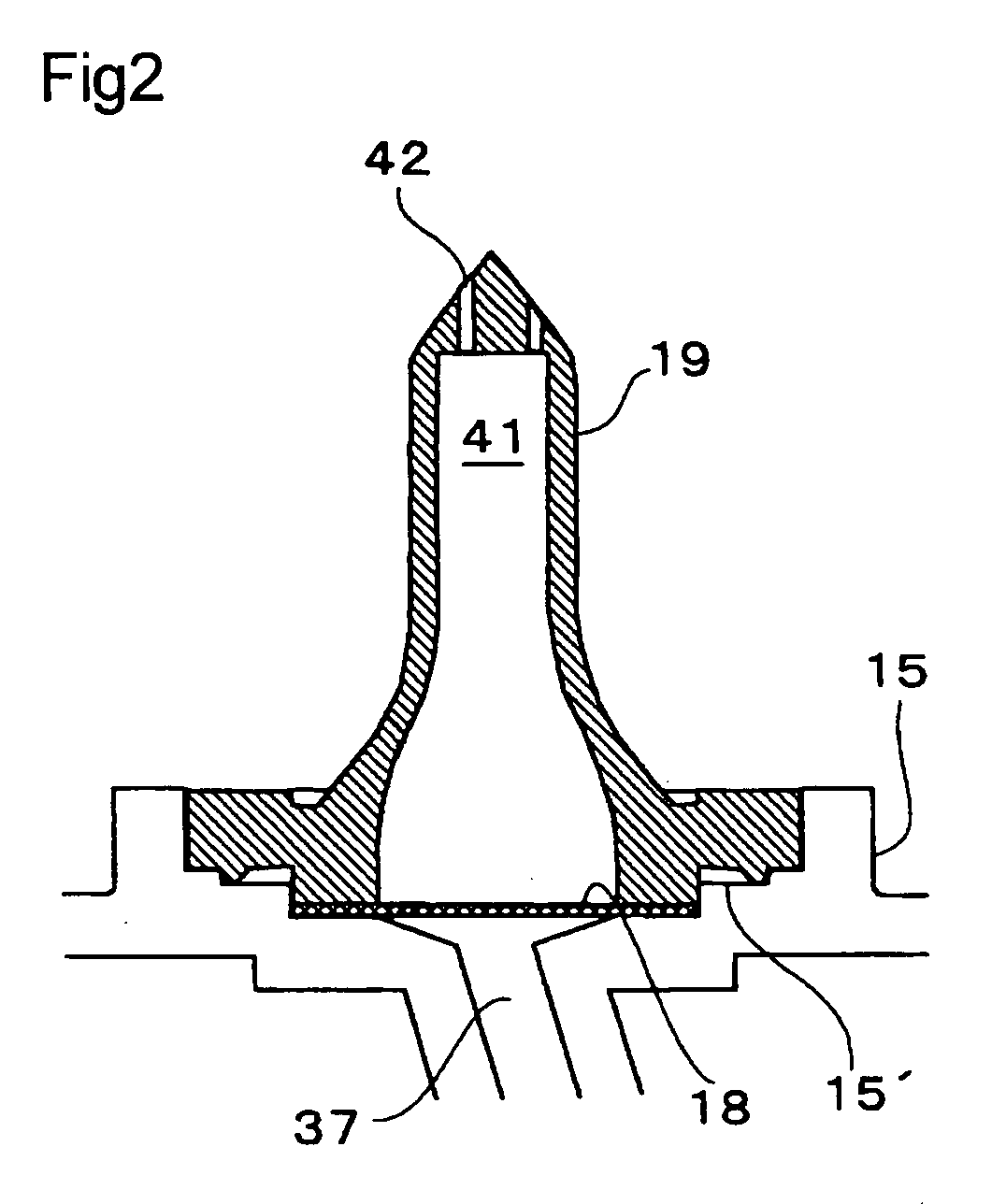Inkjet recording method and recorded matter
a recording method and technology of inkjet, applied in the field of inkjet recording method and recorded matter, can solve the problems of difficult to achieve mirror gloss, limited recording medium, and inability to meet the requirements of the application, and achieve high gloss.
- Summary
- Abstract
- Description
- Claims
- Application Information
AI Technical Summary
Benefits of technology
Problems solved by technology
Method used
Image
Examples
example a
1. Preparation of Metallic Pigment Dispersion
[0119]A resin coating solution containing 3.0 wt % of cellulose acetate buterate (butylation ratio between 35 and 39%, manufactured by Kanto Chemical Co., Inc.) and 97 wt % diethylene glycol diethyl ether (manufactured by Nippon Nyukazai Co., Ltd.) was uniformly applied by a bar coating method onto a 100 μm thick PET film, and then dried for 10 minutes at 60° C. to form a thin resin film on a PET film.
[0120]Next, an aluminum vapor deposition layer with an average thickness of 20 nm was formed on the aforementioned resin layer using a vacuum deposition device (vacuum deposition device model VE-1010 manufactured by Vacuum Device Co.).
[0121]Next, the multilayer body formed by the aforementioned method was simultaneously peeled, pulverized, and dispersed in the diethylene glycol diethyl ether using a VS-150 ultrasonic disperser (manufactured by As One Corporation), and a metallic pigment dispersion was formed by ultrasonically dispersing for ...
example b
1. Preparation of Metallic Pigment Dispersion
[0137]A dispersion containing a metallic pigment was prepared similar to Example A.
2. Preparation of the Metallic Pigment Ink Composition
[0138]Metallic pigment ink compositions were prepared according to the formulations shown in Table 8 and Table 9 using the metallic pigment dispersion that was prepared for example A. After blending and dissolving the solvent and additives to make the ink solvent, the metallic pigment dispersion was added to the ink solvent, and then blended and stirred using a magnetic stirrer for 30 minutes at ambient temperature and pressure to make a metallic pigment ink composition.
[0139]The diethylene glycol diethyl ether (DEGDE) and the tetraethylene glycol dimethyl ether (TEGDM) shown in Table 8 and Table 9 are manufacture by Nippon Nyukazai Co. Ltd. Furthermore, the γ-butyrolactone was manufactured by Kanto Chemical Co. Inc. In addition, the N-2043-60MEX and N-2043-AF-1 (resin emulsion) are manufactured by Harim...
PUM
| Property | Measurement | Unit |
|---|---|---|
| Temperature | aaaaa | aaaaa |
| Temperature | aaaaa | aaaaa |
| Length | aaaaa | aaaaa |
Abstract
Description
Claims
Application Information
 Login to View More
Login to View More - R&D
- Intellectual Property
- Life Sciences
- Materials
- Tech Scout
- Unparalleled Data Quality
- Higher Quality Content
- 60% Fewer Hallucinations
Browse by: Latest US Patents, China's latest patents, Technical Efficacy Thesaurus, Application Domain, Technology Topic, Popular Technical Reports.
© 2025 PatSnap. All rights reserved.Legal|Privacy policy|Modern Slavery Act Transparency Statement|Sitemap|About US| Contact US: help@patsnap.com


